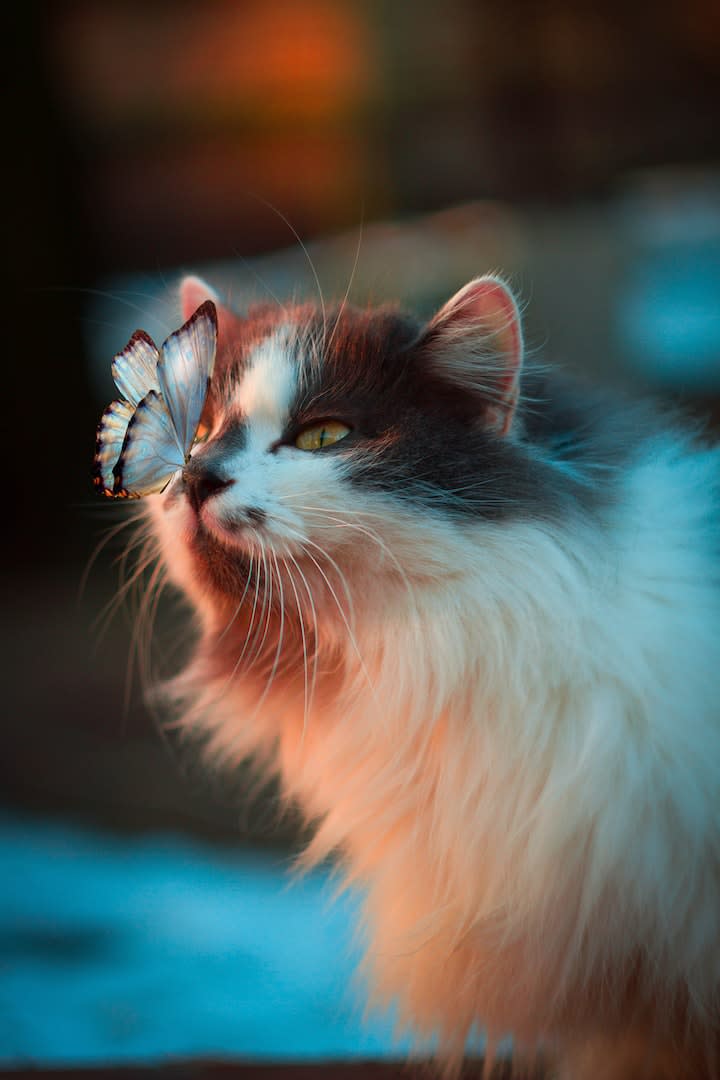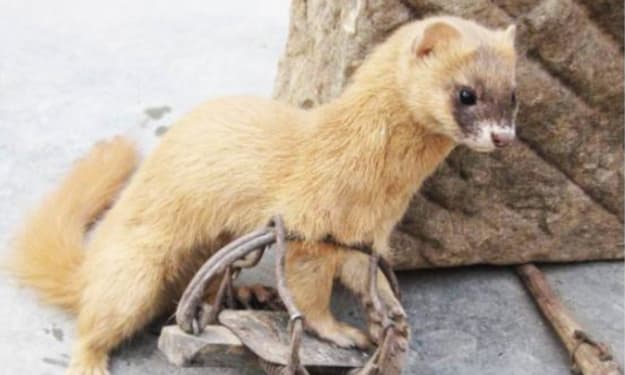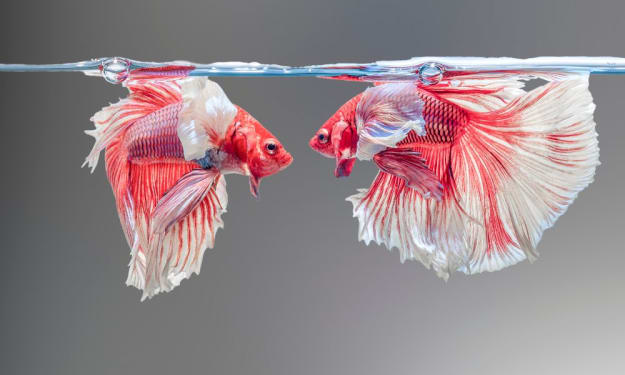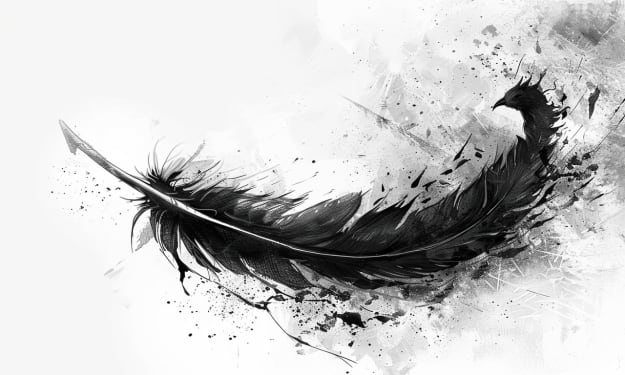The world's smallest cat: not just cute
The "soft girl" who "mixes with lions, tigers, and leopards"

In the last issue we talked about domestic cats, today our protagonist is also a cat but compared to the domestic cats that are cute outside, today's little guy is a strength, they are black-footed cats, one of the smallest felines in Africa, the appearance looks equally cute, but if you like it, it is definitely because of their strength.
The ten-footed "softies": small and cute, named for the black pads of its paws
The black-footed cat is one of the smallest felines in the world, weighing in at 1.6 kg as an adult, lighter than many pet cats, and less than 50 cm long.
The shape is still somewhat similar to that of an ordinary domestic cat, with their fur color varying from light teal-gold to reddish-brown in shades and covered with black dotted and ringed stripes. However, compared to ordinary domestic cats, they are smaller, have thick necks, and short tails, and look a little more round. It looks more than our home face.
Black-footed cats live in Africa, to adapt to the hot weather, they evolved a black pad of flesh on the bottom of their feet, and there is a thick layer of black hair covering it so that they can walk on the sand in higher temperatures, not to burn, hence their name.
Black-footed cats usually prey on spiders, rodents, birds, hares, and even sheep, among which Cape hares, jumping antelope cubs and other animals are many times the size of black-footed cats and are also often captured, although spiders account for 50% of their food, the rest are mainly rodents such as rats, a black-footed cat can take out 3000 rats a year.
When the food is abundant, black-footed cats like to eat the food hidden, scientists have found that black-footed cats hunt more, they will not eat all at once but will be part of the hidden to stay to eat. But think about it, they should not be able to hide for a long time, after all, Africa is so hot, it will soon stink off.
They rarely drink water and rely on the water in their food, enough to maintain their body's needs, but in the rainy season, more rain, they will occasionally drink a little water.
Black-footed cats are solitary and only come together during the mating season. However, after mating is complete, the male cat slips away, leaving the female cat to raise her cubs alone, usually for 2 months of conception, and when the kittens are 3 months old, the youngsters will leave their mothers to live independently.
There was a long time when black-footed cats were not well known because they lived in desolate places, off the beaten track, and with their nocturnal movements, they seemed quite mysterious.
In the feline family, they are more closely related to forest cats and dune hairs and belong to the same smaller size, but you should not think they are small and ignore their fighting power.
Deadly "death cats": fierce and ruthless, dare to hunt and kill sheep four times their weight
In 2018, the BBC broadcast a cat-sucking blockbuster "Big Cats", thanks to the popularity of this film, the image of black-footed cats is also what more people know, attracting countless fans.
They are small in size and live in Africa, where there are hidden dragons and crouching tigers, grasslands and deserts, and the living environment is harsh, so to get the space to survive here, it is far from enough to be cute, and the "soft girl" must be trained in 18 skills, otherwise she will become a prey in a minute.
After a long period of evolution, they have been able to "mix society" with lions, tigers, and leopards called the "dead cat".
Because of the heat, the black-footed cats have developed a diurnal lifestyle, during the day, they usually lie down in termite mounds or other animal abandoned burrows to escape the heat, and at dusk, when the weather begins to cool, they will start to go out to feed.
They will usually search for prey from a distance to get enough food, generally around 8 kilometers around the cave, which is their hunting range, if the food is not enough, they will further expand the hunting range.
Generally, they bite the target, and the success rate is still very high, can reach more than 60%, while the lion's success rate is generally 30%, such a high success rate, is enough to make their feline brothers lions, tigers and leopards willing to bow down.
Their body shape conditions determine their bouncing power is very strong, but the short board is not climbing trees, but this does not affect their fighting power, after all, they live in places, with fewer trees, and more grassland desert, as long as the bouncing power is enough, silently approaching prey, jump up a lunge, a bite lamb's throat, until the lamb vein bite through, back to heaven before releasing the mouth, fierce and ruthless. There are even legends that they can hunt and kill giraffes, but now there is confirmation.

When they encounter danger, they will fight desperately, completely unafraid to fight with those guys who are several times bigger than themselves, to the end.
Endangered black-footed cats: nowhere to hide, looking for a peaceful place to live
Black-footed cats are endemic to Africa, and their distribution is quite small, with only a small distribution in South Africa, Namibia, and, Zimbabwe in southern Africa.
Although the black-footed cat is drought-tolerant, it does not mean that they do not need water at all, and in those very arid areas, they cannot survive. Therefore, with human development, their original habitat is becoming smaller and smaller, and the original home they relied on is no longer.
Combined with the fact that people like to hunt them for meat and fur, the survival situation is not optimistic. Scientists have investigated the survival status of the black-footed cat in the Northern Cape provinces of South Africa and found that
In 1998-1999, the density of Bentonite was 0.17 cats/km.
From 2005-2014, the density in the Bentonite area was 0.08 individuals/square milometer.
In 2009-2014, the density in the Bloemfontein area was 0.06 individuals/square milometer.
In contrast, compared to other areas, these two areas have a higher distribution of black-footed cats, which leads to the assumption that the density of black-footed cats is 0.03 cats/m.
It has been 6 years since this survey, and during these 6 years, the number of black-footed cats is still decreasing, so you can imagine how difficult their life is.
The disturbance of human activities is the root cause, and they look forward to a peaceful place.
About the Creator
Jorge BURRUCHAGA
The process of raising animals is not as easy as you once thought, but you find joy in raising them at the same time.
Enjoyed the story? Support the Creator.
Subscribe for free to receive all their stories in your feed. You could also pledge your support or give them a one-off tip, letting them know you appreciate their work.






Comments
There are no comments for this story
Be the first to respond and start the conversation.